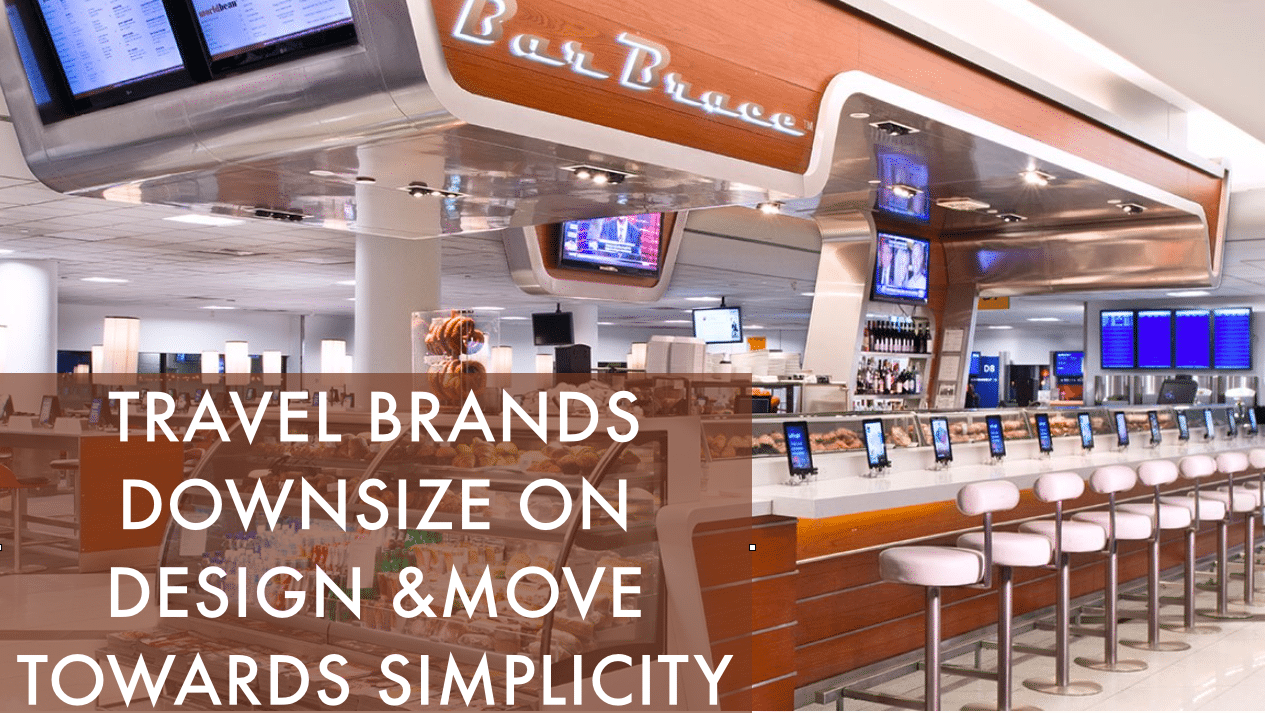Skift Take
Hotels, airlines and airports who aren’t trying to simplify their guest experience are now in the minority, but more importantly the simplification of their designs better reflects how guests actually travel and behave on trips today.
Last month we launched our first ever magazine, Megatrends Defining Travel in 2015, where we identify the global trends in travel in 2015 and beyond, and focus on three emerging key themes: Mobile. Seamless. Experiential. Below is an extract from the magazine.
The changes that digital innovation have brought about in consumers’ lives are perhaps most apparent in the absence of clutter in the physical world as travelers move from car to train to plane to hotel room and even on to a convention floor.
Travel brands are responding by downsizing, from slimline seats on planes to smaller desks in hotel rooms, and using the extra space to either pack in more passengers or make room for new things travelers need. Bring-your-own-device means that travel providers with a solid Wi-Fi network can radically rethink how they use space and what they offer their guests.
The airline seat is one of the more contested fronts in this tussle over simplification. The rise of the slimline seat reduces the bulk of airline rows, which allows airlines to add a handful of seats per plane. Slimlines are possible because of safety advances, an airlines are also cutting out the bulky in-flight entertainment systems that crowded seatbacks, placed bulky units beneath seats, and added weight and wiring to a plan. In the place of tradition in-flight entertainment, passengers access entertainment via streaming service to their own laptops, tablets, or smartphones. On U.S. airlines such as United Airlines and Delta passengers can stretch out their legs with less obstruction than before (unless the airline has decided to squeeze a few more inches out of pitch) and choose from hundreds of movies and TV shows.
 The airport terminal is expanding in a way, too, with restaurants that were once clogged with rollerboard suitcases and duffel bags being replaced with tables and seating throughout the terminal that are connected to restaurants via iPads. At Newark Liberty Airport, United Airlines has distributed 6,000 iPads spread throughout gate areas and chef-inspired restaurants give guests the convenience of keeping tabs on their flight, ordering food from their gate and mobile pay.
The airport terminal is expanding in a way, too, with restaurants that were once clogged with rollerboard suitcases and duffel bags being replaced with tables and seating throughout the terminal that are connected to restaurants via iPads. At Newark Liberty Airport, United Airlines has distributed 6,000 iPads spread throughout gate areas and chef-inspired restaurants give guests the convenience of keeping tabs on their flight, ordering food from their gate and mobile pay.
Perhaps the most radical rethinks are happening in hotel rooms. The evolution of televisions at the beginning of the 2000s from fat boxes to wall-mounted flatscreens allowed properties to clear out big armoires and dressers, but hotel brands are just now beginning to rethink how rooms can function in a world where laptops and TVs aren’t so huge, and travelers don’t need the property to provide them with a tangle of cords or a clock radio to stay ahead of the game.
The best designs are the ones which don’t require the guest to do any problem solving. This means putting enough outlets — ones with USB plugs are even better — next to beds so phones, tablets and laptops can be charged and used where the guest wants to use them, and where it makes sense to use them. The standard desk and chair still help the average business traveler, but smart hotels are abandoning your father’s desk for smaller size that actually makes sense for the laptops and tablets travelers place on them.
As more hotels try squeezing as many rooms as possible into a property, guests are looking for other spaces where they can spread out, socialize and relax. Many hotels now realize that it’s smart to position-and design-themselves as places where people who aren’t even guests are welcome.
Transforming lobbies into open spaces with ample seating and creature comforts encourage rendezvous, which in turn shows guests how simple it is to make the lobby your larger base. Marriott’s Greatroom Lobbies, for example, encapsulate how hotel lobbies are turning into living rooms and re-centering the nucleus of the hotel to the lobby and lounge areas. At the Crystal City Marriott in Arlington, VA, the restaurant and bar were moved to the ground level to show off the gathering space that the hotel had to offer. And we can’t neglect the free Wi-Fi and plenty of electrical outlets these lobbies have either.
This is an extract, get this and all the other trends, download the magazine for full trends for 2015.
We want to thanks our magazine sponsors Virgin Atlantic, Amadeus and Egencia for making this possible.
Download the copy for deeper read. Share it if you like it and think others can benefit from them.
The Daily Newsletter
Our daily coverage of the global travel industry. Written by editors and analysts from across Skift’s brands.
Have a confidential tip for Skift? Get in touch
Tags: amenities, architecture, otg
Photo credit: OTG designed and managed New York La Guardia Terminal C Interior.
